Summary On Unixbased operating systems like Mac and Linux, you sometimes encounter a large directory in which all files and subdirectories have permissions of 777, meaning that anyone can read, write, and execute themOne way to change all directories to the more usual value of 755 and all files to the more usual value of 644 is the following commandChmod is a program responsible for modifying access permissions of file and directories in Unix/Linux While the concept is easy to understand, the syntax might overwhelm new users a little bit Most of the time, you will encounter chmod 777, chmod 755 and chmod 644 In this article, we will explain the meaning of these numbers and how they are related to the actual permissionsCHMOD 777, 755, 655, 644 and more permissions Linux files Author admininfoinfo Date Of Publication March/21 One of the most practical ways in which we can protect our files and folders in Linux environments is by properly establishing the permissions so that those who access the system may or may not edit these files
Cifs And Chmod 777 Truenas Community
Chmod 777 file example
Chmod 777 file example-The other way is terminal , where you can change the permission via Chmod If you use chmod 777 that means you assigned all the permissions ie to make file readable, writable and executable by everyone chmod 775 /path/to/file chmod command uses & Explanation chmod is a command to change permission of a file It stands for change modeOschmod takes a single filename as argument, so you need to loop over the filenames and apply chmod files = 'file1', 'file1/tmp', 'file2', 'file2/tmp', 'file3', 'file3/tmp' for file in files oschmod(file, 0o0777) BTW i'm not sure why are you setting the permission bits to 777 this is asking for troubleYou should pick the permission bits as restrictive as possible



Basic Linux Commands Ubuntu
Please be sure to answer the questionProvide details and share your research!Chmod 777 R /* /!* Bash has this command shopt s dotglob to also include hidden files in commands (shopt u dotglob to disable that behaviour) if you want to stick to using sudo chmod R 777 * It will break your system if you execute it from the wrong directory NEVER use a bare * but use /*Windows doesn't use anything so primitive as a bunch of numbers to represent permissions On Lunix, chmod 777 sets permissions to be read, write, executable by everyone Unix permissions work simply enough, but they are caveman shit for
Then, You need to adjust the permissions of storage and bootstrap/cache cd into your Laravel project sudo chmod R 755 storage;What Does chmod 777 Mean Setting 777 permissions to a file or directory means that it will be readable, writable and executable by all users and may pose a huge security risk This article explains the basic Linux permissions model and what the numbers corresponding to the permissions meanRe chmod 777 access to a file Posted 1215 PM ( views) In reply to Tal The surest way is to set it after the file has been written, either with the x statement, or the filename pipe method
Chmod 777 (chmod arwx) sets permissions so that, (U)ser / owner can read, can write and can execute (G)roup can read, can write and can execute (O)thers can read, can write and can executeRe chmod 777 access to a file Posted 1215 PM ( views) In reply to Tal The surest way is to set it after the file has been written, either with the x statement, or the filename pipe methodChmod 777 R public_html/main_page The following screenshot shows the execution of the command on a Linux Environment The command executed here is chmod 777 R home and it gives 777 permission to the folder home itself, also to all of the files and subdirectories inside this folder



Db2 Luw Academy Db2 Luw Tips N Tricks Part 14


Solved Java Lang Illegalstateexception Driver Not Executable On Mac Total Qa
Thanks for contributing an answer to Unix & Linux Stack Exchange!You really shouldn't set 777, it would probably be better to just change the ownership of that directory to the www account Anyway your changes in the Dockerfile really don't matter, because you have a volume (appdata/var/www) meaning that the permissions you have in the image are masked by your volumeYour docker exec it myapp /bin/sh would be failing because that image is running as www$ chmod 777 filetxt (or) $ chmod ugorwx filetxt Give execute privilege to user Leave other privileges untouched execute = 1 If you want to just add execute privilege to users and leave all other privileges as it is, do the following $ chmod ux filetxt



Permissions And Ownership Chown Chmod On Redhat Linux Using Vmware Workstation Vmware Workstation Linux Youtube



Permission Chmod
Chmod 777 filename chmod 777 is considered potentially dangerous because you are giving read, write and execute permission on a file/directory to everyone (who is on your system) You should totally avoid it chmod x or chmod ax Execution for everyoneIt is common to use the basic chmod command to change the permission of a single file However, you may need to modify the permission recursively for all files within a directory In such cases, the chmod recursive option (R or recursive) sets the permission for a directory (and the files it contains) The syntax for changing the file permission recursively isChmod 777 is the unique mechanism of chmod to control file access Gathering clear knowledge about it can help you to make your web system foolproof buy controlling the file access permission In any file control mechanism, there are two sections – Class – Classes come in three subgroups Group, Owner, and Others



Error Failed To Create Parent Directories For Tracking File When Building Jenkins Programmer Sought



Chmod 777 All The Files X All The Y 900 X 900 Meme Generator
Chmod options mode filename filename1 chmod options mode directory_name The "mode" consists of three parts who the permissions apply to, how the permissions are set and which permissions to set who is specified as one of u (user) the owner of the file g (group) the group to which the owner belongsThe chmod command is a powerful tool used to modify a Linux system's permissions for a specific file or directory The command can be dangerous to system's security when misused, for example, setting the permissions of files and directories to 777 You should typically never run a command off of the Internet without understanding how itThe umask also influences the chmod command as well as the permission of newlycreated files and directories 2 Default Permissions directory 777 , file 666 Index When a process creates a new file system object, such as a file or directory, the object is assigned a set of default permissions that is masked by the umask



Unix Permissions The Easy Way Index Of All Chmod Permutations By Semi Koen Towards Data Science



Linux Commands 5 File Permission Chmod Youtube
Sudo chmod R 755 bootstrap/cacheCHMOD 777, 755, 655, 644 and more permissions Linux files Author admininfoinfo Date Of Publication March/21 One of the most practical ways in which we can protect our files and folders in Linux environments is by properly establishing the permissions so that those who access the system may or may not edit these filesCreating a file that becomes executable chmod 777 gihook file Ask Question Asked today Active today Viewed 7 times 0 I'm working in rails on UBUNTU Note also that it is in general a security problem to write files with mode 777, since any user on the system can modify them



Chmod 777 What Does It Really Mean Make Tech Easier



How To Set Chmod 777 To A Folder And All Its Contents Dev Community
How to change your file to 777 or rwxrwxrwx using chmod Chmod is a well known command line utility, that's used to manage file permissions on MacOS, Linux and other Unix like operating systems While there are multiple ways to use chmod, on this site, we have chosen to focus exclusively on using chmod with Octal NotationBut avoid Asking for help, clarification, or responding to other answersType chmod 777 * to change mode for all files in that directory If you only want to change mode for a special type of file your can use chmod 777 *txt *dat orchmod 777 filenameext FTP In this example we're going to use WS FTP, but you can use any other FTP software that support chmod UNIX



Basic Linux Commands Ubuntu



Title Of Folders With Chmod 777 Is Not Readable Issue 36 Hukl Smyck Color Scheme Github
Only root, the file owner, or user with sudo privileges can change the permissions of a file Be extra careful when using chmod, especially when recursively changing the permissions Conclusion # If you are managing a Linux system, it is crucial to know how the Linux permissions work You should never set 777 (rwxrwxrwx) permissions files andThe chmod command is a powerful tool used to modify a Linux system's permissions for a specific file or directory The command can be dangerous to system's security when misused, for example, setting the permissions of files and directories to 777 You should typically never run a command off of the Internet without understanding how itYou can also change permissions using the chmod command in the Terminal In short, "chmod 777" means making the file readable, writable and executable by everyone chmod 777 / path / to /file Hopefully, this article helped you better understand file permissions in Unix systems and the origin of the magical number "777"



Chmod 777 Programmingmemes



6 Best Linux Unix Command Cheat Sheet
Chmod 777 R public_html/main_page The following screenshot shows the execution of the command on a Linux Environment The command executed here is chmod 777 R home and it gives 777 permission to the folder home itself, also to all of the files and subdirectories inside this folderAvoid using boundary cases, such as chmod 777 and chmod 000 Using chmod 777 gives everyone rwx permissions, and it is generally not a good practice to give full powers to all the users in a system The second case, I will leave you guys to figure outHow chmod 777 looks in file listing For files After changing a file's mode to 777 the file's mode will be displayed in Unix style file lsting as rwxrwxrwx For folders After changing a directory's mode to 777 the folder's mode will be displayed in Unix style file lsting as d rwxrwxrwx Popular CHMOD Commands (TOP ) chmod 777;



How To Fix Chmod 777 Wpscan Rb Chmod Cannot Access Wpscan Rb No Such File Or Directory



Linux Command Line Cheat Sheet Kalitut
Chmod is a commandline utility, which is used to change file mode bits But, first we need to discuss a bit about file & directory permissions itself We can long list the contents of a file & directory using ls command with l optionChmod x vs chmod 777 comparison Instead of using ugoa shorthand for permissions, chmod allows you to use numbers, which is called octal mode number notation File permissions in Linux are stored in file mode bits , and those bits varies between user groupsI am trying to CHMOD 777 all doc files on my Mac Is there is a way through Terminal that I could do this?



Linux Cheat Sheet



Bash Sudo Abc Sh Command Not Found Ask Ubuntu
Type chmod 777 * to change mode for all files in that directory If you only want to change mode for a special type of file your can use chmod 777 *txt *dat orchmod 777 filenameext FTP In this example we're going to use WS FTP, but you can use any other FTP software that support chmod UNIXChmod 755 R /opt/lampp/htdocs will recursively set the permissions There's no way to set the permissions for files automatically in only this directory that are created after you set the permissions, but you could change your systemwide default file permissions with by setting umask 022Chmod 777 R storage;



File Security And Access Control Ppt Download



Chmod 777 A Definitive Guide To File Permissions
How to change your file to 777 or rwxrwxrwx using chmod Chmod is a well known command line utility, that's used to manage file permissions on MacOS, Linux and other Unix like operating systems While there are multiple ways to use chmod, on this site, we have chosen to focus exclusively on using chmod with Octal NotationChmod x vs chmod 777 comparison Instead of using ugoa shorthand for permissions, chmod allows you to use numbers, which is called octal mode number notation File permissions in Linux are stored in file mode bits , and those bits varies between user groupsNever Use chmod 777 Setting 777 permissions to a file or directory means that it will be readable, writable and executable by all users and may pose a huge security risk



Oracle Unix Commands Unix Software Areas Of Computer Science



Solved Question 28 Which Of The Following Commands Append Chegg Com
Why "chmod 777" is a bad idea Scenario 1 Suppose you are on a shared hosting server, with a hundred other users you don't know or trust Imagine you have a user account called "picard" You upload your website, which contains a PHP form that your users can upload files withChmod is a program responsible for modifying access permissions of file and directories in Unix/Linux While the concept is easy to understand, the syntax might overwhelm new users a little bit Most of the time, you will encounter chmod 777, chmod 755 and chmod 644 In this article, we will explain the meaning of these numbers and how they are related to the actual permissions$ chmod 777 filetxt (or) $ chmod ugorwx filetxt Give execute privilege to user Leave other privileges untouched execute = 1 If you want to just add execute privilege to users and leave all other privileges as it is, do the following $ chmod ux filetxt


How To Build An Z3gateway On Pi3 From Ug129



Permission Denied Inside Var Www Html When Creating A Website And It S Files With The Apache2 Server Stack Overflow
$ chmod 777 filetxt (or) $ chmod ugorwx filetxt Give execute privilege to user Leave other privileges untouched execute = 1 If you want to just add execute privilege to users and leave all other privileges as it is, do the following $ chmod ux filetxtThe chmod command changes the access permissions of files and folders The chmod command, like other commands, can be executed from the command line or through a script file If you need to list a file's permissions, use the ls command Mykyta Dolmatov / Getty ImagesChmod u=rw,og=r new_filetxt Using the "=" operator means we wipe out any existing permissions and then set the ones specified let's check the new permission on this file ls l new_filetxt The existing permissions have been removed, and the new permissions have been set, as we expected



Unix Linux Can T Read File With Chmod 777 Youtube



Sticky Bit In Linux
Chown R wwwdatawwwdata storage;In Unix and Unixlike operating systems, chmod is the command and system call which is used to change the access permissions of file system objects (files and directories)It is also used to change special mode flags The request is filtered by the umaskThe name is an abbreviation of change mode Modes are the filesystem permissions given to "user", "group" and "others" classes to accessChmod 777 participants The first 7 sets the permissions for the user, the second 7 sets the permissions for the group, and the third 7 sets the permissions for everybody else If you want to be the only one who can access it, use chmod 700 participants



Linux World Posts Facebook



Set Or Change An Azure App Service File Or Folder Permission The Best C Programmer In The World Benjamin Perkins
$ ls l cake drwxrxrx 2 zanna zanna 4096 Jul 12 1143 brownies $ chmod 666 cake $ ls l cake/brownies ls cannot access 'cake/brownies' Permission Denied Even though I am the owner of the directory 'brownies' and all users have permission to read and enter it, I can't access it if its parent directory has no execute permissionPhp will not complain but will do an implicit conversion to an int before running chmod Unfortunately the implicit conversion doesn't take into account the octal string so you end up with an integer version 644, which is 14 octal up down__ Thanks for the responses I thought this was the way to change permissions on Word doc files I have 2 users on Mac make that share a folder But when one creates a doc file the other just has read permissions



Installation Problem Flightpath



How To Set 777 Permissions In Windows 7 Youtube



Images Uploading As Binary Files Pdfs Not Processing Collectiveaccess Support Forum



New Bash Linux Cheat Sheet Wallpaper Download Free 40 X 3050px



File Security And Access Control Ppt Download


Laravel Filemanager Update On Sherehosting And Open Chmod 777 A Issue 403 Unisharp Laravel Filemanager Github



How To Open Root Account Login In Ubuntu Programmer Sought



Chmod X Explained Everything You Need To Know



How To Set Chmod 777 To A Folder And All Its Contents Dev Community



24 File Permissions Txt



Bash Unix Commands Cheat Sheet By Jluis Download Free From Cheatography Cheatography Com Cheat Sheets For Every Occasion



Chmod 777 A Definitive Guide To File Permissions


Some Linux Commands Cheat Sheet Linux



Chmod 777 Your Mom Linux Unix Funny W Turtles Style



Professor Bear Linux File Permissions Youtube



Chmod 777 Your Mom Linux Enthusiast Hoodie Lovetheworld Style



How Do You Fix Permissions On Macos When Songkong Cannot Modify A File Songkong Questions Songkong And Jaikoz Music ger Community Forum


Cifs And Chmod 777 Truenas Community



Chmod Tutorial This Is A Quick Alternative Tutorial On By Ryan Morrison Medium



Cli Commands Poster Gandalf Linux Debian Command Lines Unix Ubuntu Linux Mint 1080p Wallpaper Hdwallpaper Desktop Linux Mint Linux Gandalf



How To Use Chmod 777 Command In Linux Explained How To Use Chmod Command Hindi Tutorial Youtube



Github Royalatomo Theapppy This App Is Useful In Containig The Sensitive Data Easily And Arrenged



Codiad Not Loading File List Issue 1084 Codiad Codiad Github



Problem Ojs 3 0 2 On Centos7 Software Support Pkp Community Forum



Linux Common Commands Tutorial And Use Examples Linuxcommands Site



Ppt File And Directory Permissions Powerpoint Presentation Free Download Id



Ppt Agenda Powerpoint Presentation Free Download Id



How To Use The Download Access Script Earthdata Search Earthdata Wiki



Ubuntu Chmod 777 In Terminal The Command To Make All Changes Affect Every File And Folder Youtube



Chmod 555



Ppt Agenda Powerpoint Presentation Free Download Id



1 Ios Reverse Engineering Programmer Sought



Post By Killerwhalejames In Possible Chromebook Download Itch Io



Linux Modify The File Permissions Chmod Programmer Sought



Docker Got Permission Denied While Trying To Connect To The Docker Daemon Socket At Unix Var Run Docker Sock Stack Overflow
/GettyImages-1021092796-ea8c63ee76f84bd5bf98c4222337fbb4.jpg)


How To Use The Chmod Command In Linux



Give Write Access Chmod 775


Configure Powershell Remoting Between Windows And Linux Lightnetics



Ubuntu Linux Agent Installation Uninstallation Guide Motadata Itsm Documentation 2 0 0 Documentation



Comandos Terminal Chmod 777 775 600 Youtube


How To Share File Directory In Linux Using Samba Server Unique Web



How To Change File Permissions In Windows 10 Youtube



Wordpress Wp Content Uploads Error Resolved Do Not Chmod To 777 Youtube



Bash Sudo Abc Sh Command Not Found Ask Ubuntu


Illustrated Why Setting 777 File Permission Is A Bad Idea On Your Linux System Linuxmasterrace



Devrant A Fun Community For Developers To Connect Over Code Tech Life As A Programmer



File Permissions And Ownership



File Security And Access Control Ppt Download


Mount The Amazon Efs File System On The Ec2 Instance



Linux Cheat Sheet
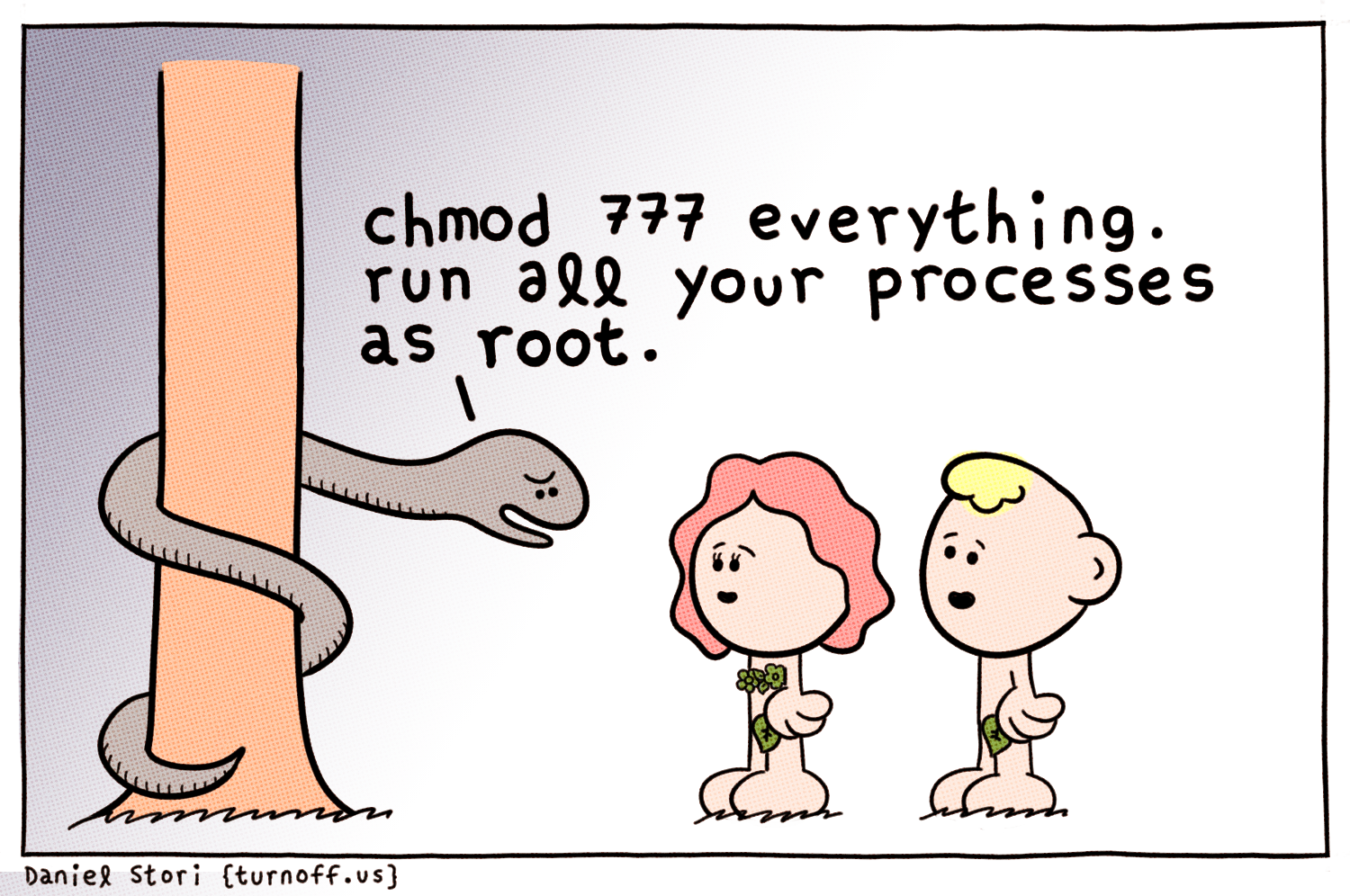


Chmod 777 Comic Dzone Security
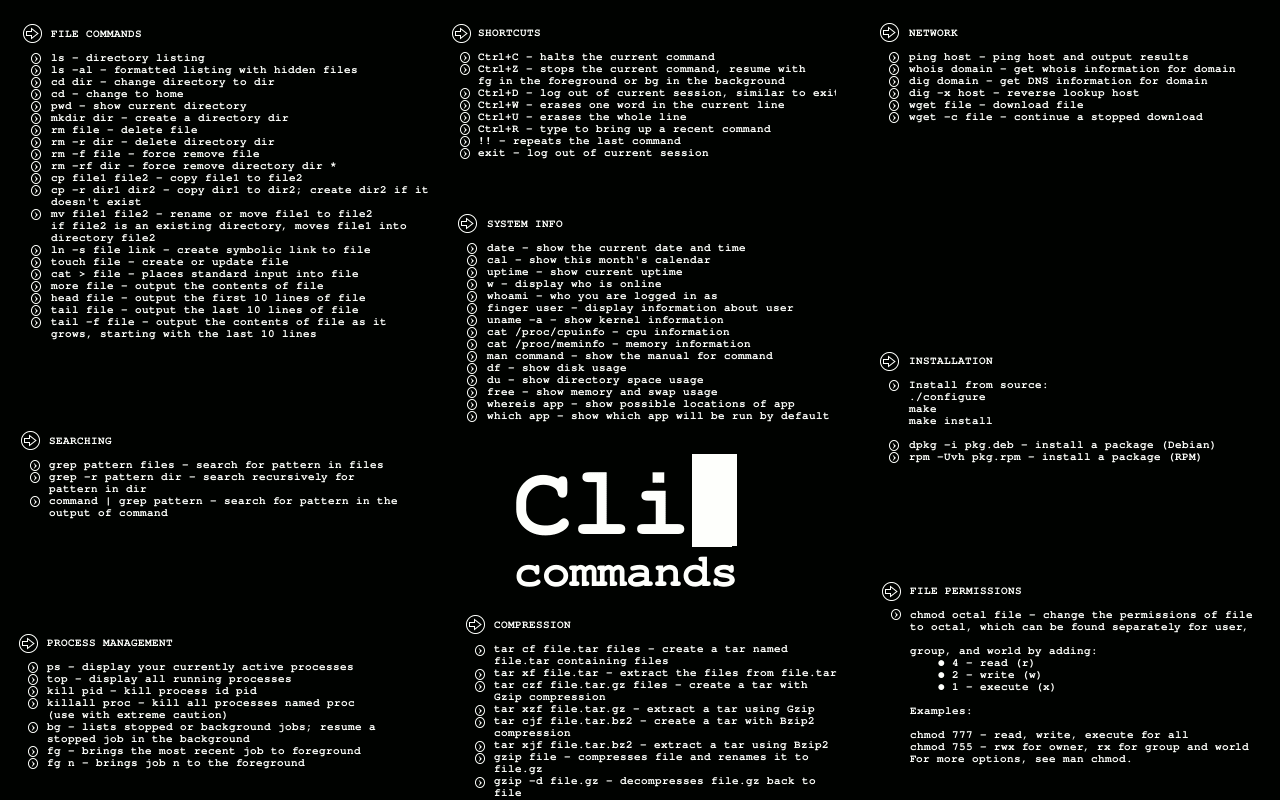


Backtrack Page Useful Commands For Kali Linux



Unix Workshop Part3 Doc



Directory How Can I Change Permissions Of A Folder Including Its Enclosed Files And Subdirectories Ask Ubuntu



Magento Fails To Create Logfiles After Installing Patch Supee Magento Stack Exchange



Windows Faq
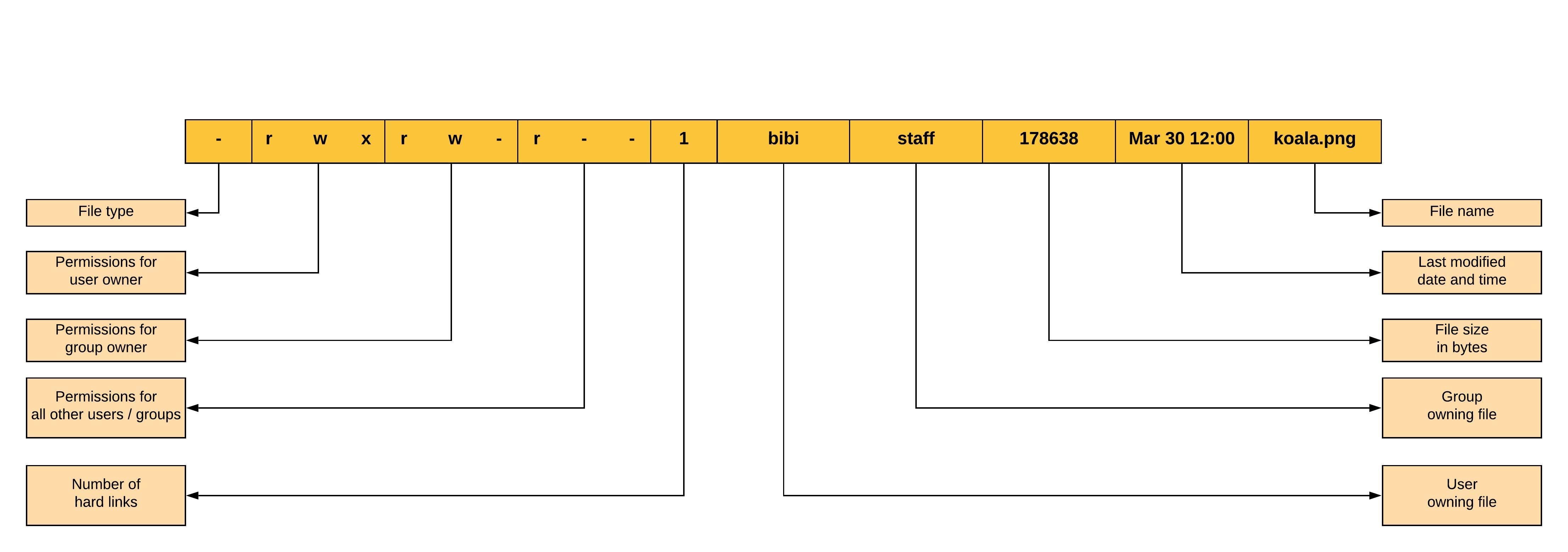


Linux File Permissions And Ownership By Udara Bibile Level Up Coding



Chmod 777 A Definitive Guide To File Permissions



Wordpress Google Cloud Filezilla File Copy Write Permissions



Solved 4 Points Save Answer Question 1 Which Directory Is Chegg Com
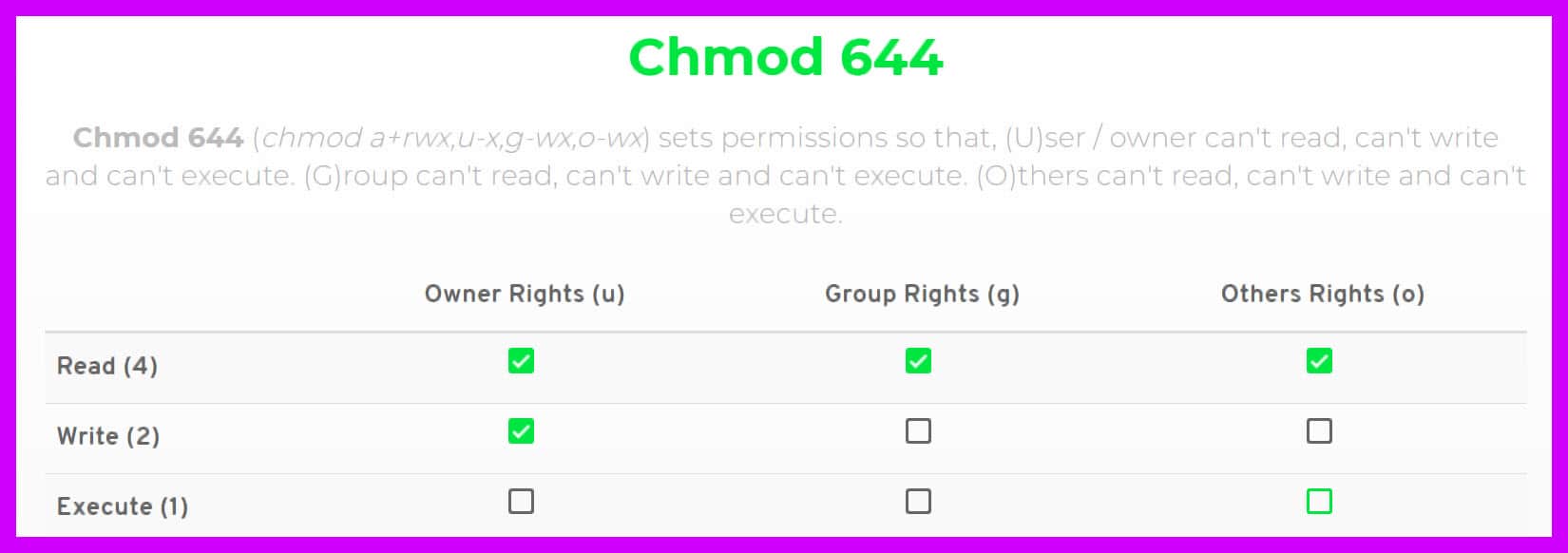


Chmod 777 A Definitive Guide To File Permissions



I Need Help In Laravel 5 4 Permission Denied Stack Overflow


Setup Social Publishing Cms Content Managemnet System Using Pligg



Bif703 File Permissions Ppt Download



Chmod 777 Your Mom Linux Enthusiast T Shirt Lovetheworld Style



Unable To Write Into External Hdd And In Its Properties No File System Format Details Are Shown In Ubuntu 13 04 Ask Ubuntu



Wordpress Chown Chgrp Chmod Explained For Ftp And Ssh



0 件のコメント:
コメントを投稿